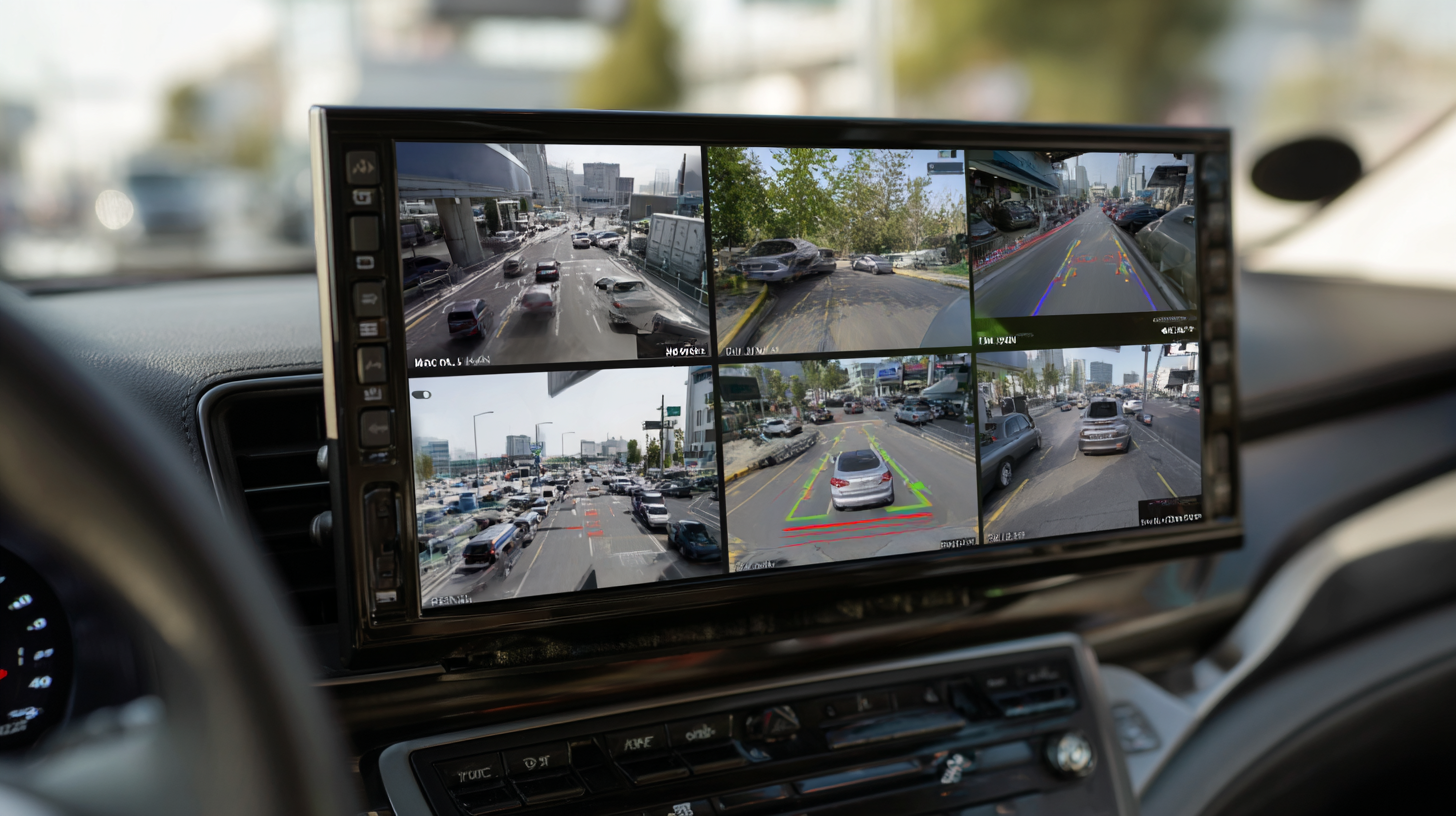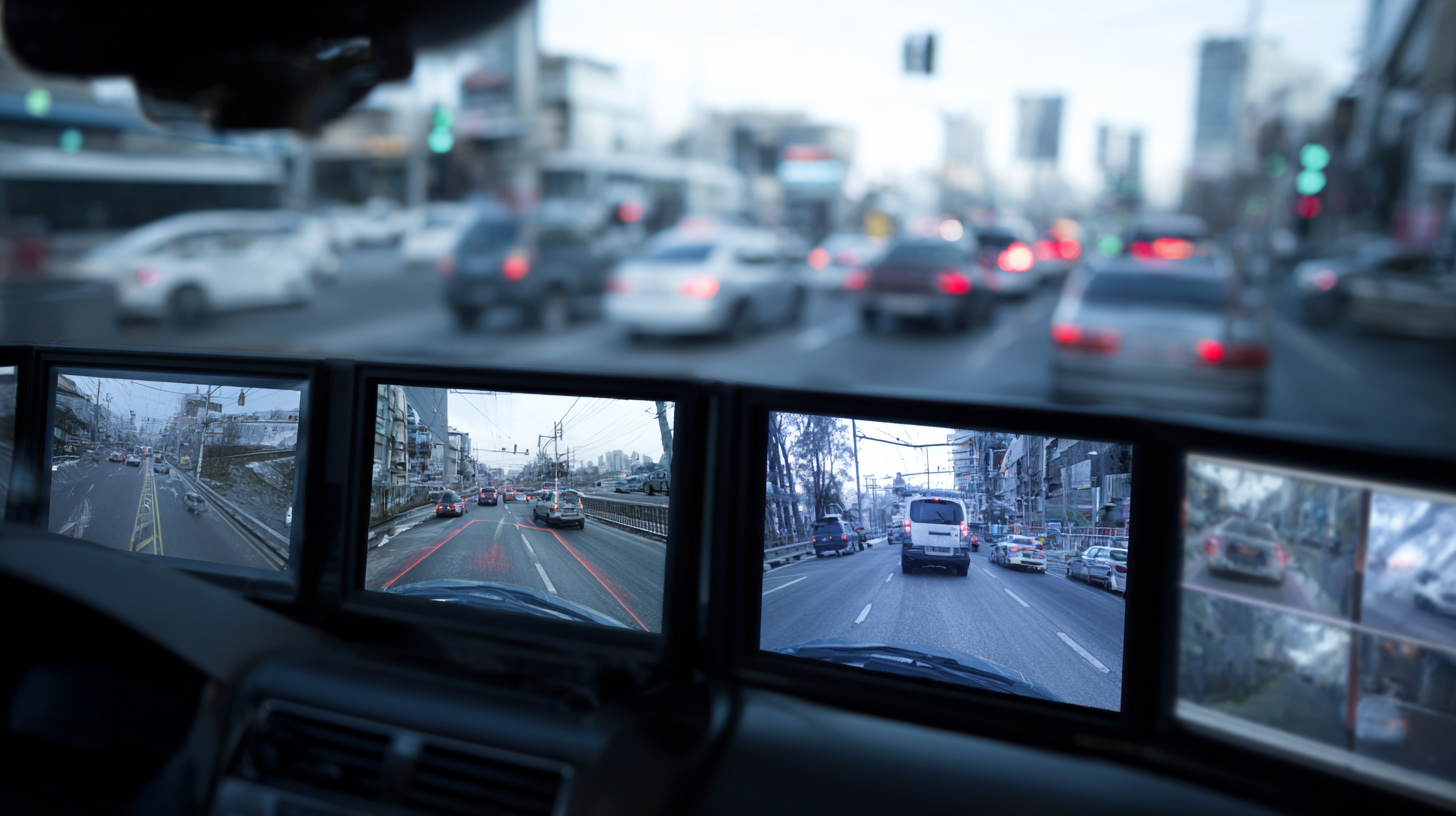In today's rapidly evolving automotive landscape, the integration of advanced technology is crucial for enhancing safety and functionality, particularly with the rising popularity of the Multi Camera Car System. According to a recent report by Grand View Research, the global market for automotive camera systems is expected to reach USD 12.1 billion by 2025, driven by increasing demand for safety features and advanced driver-assistance systems (ADAS). As consumers and manufacturers alike prioritize enhanced visibility and obstacle detection, choosing the right manufacturer for a Multi Camera Car System becomes a pivotal decision. This blog will delve into the critical factors to consider when selecting a manufacturer, spotlighting expert comparisons of top brands and addressing common problems with various system types to ensure an informed choice for maximizing vehicle safety and performance.

When it comes to selecting a multi-camera car system, the choice of manufacturer is crucial. A reliable manufacturer not only produces high-quality products but also guarantees customer support, component compatibility, and durability. In an industry where technology keeps evolving, working with a manufacturer that has a proven track record can provide peace of mind. They often have experience in addressing common issues, which can save time and money in the long run.

Moreover, the right manufacturer invests in research and development, ensuring that their systems are equipped with the latest advancements. This is particularly important in multi-camera setups that require seamless integration and operation under various conditions. A reputable manufacturer will also likely provide expert comparisons and insights that can help consumers make informed decisions tailored to their specific needs. Therefore, understanding the importance of manufacturer selection ultimately leads to better investment and satisfaction with your multi-camera car system.
When selecting a multi-camera car system, it's crucial to identify key features that ensure safety and usability. A report from the National Highway Traffic Safety Administration (NHTSA) highlights that vehicles equipped with advanced camera systems can reduce accidents by up to 30%, emphasizing the importance of high-quality components. Look for systems that offer high-definition video, wide-angle lenses, and night vision capabilities to enhance your driving experience, whether during the day or at night.
Tips: Prioritize a system with a real-time monitoring feature, allowing drivers to view camera feeds on demand. This can be particularly useful for maneuvering in tight spaces or while reversing. Additionally, opt for a system with an intuitive installation process and compatibility with your vehicle’s existing electronics for a seamless integration.
Another essential feature is the durability of the cameras, which should be weather-resistant and equipped with robust housings. According to industry standards, systems that can withstand extreme temperatures and various weather conditions considerably extend the lifespan of the equipment. Ensure that the manufacturer provides a warranty and after-sales support, reflecting their commitment to quality and customer satisfaction.
 Choosing the right manufacturer for your multi-camera car system can be a daunting task. Recent observations indicate that Chinese manufacturers are rapidly becoming leaders in the automotive technology sector. According to a report from the "China Manufacturing 2025" policy, the country's international competitiveness in manufacturing has significantly improved, with a focus on high-tech advancements. Their strategic investments in research and development have enabled them to deliver innovative solutions at competitive prices, making them attractive partners for companies seeking quality car systems.
Choosing the right manufacturer for your multi-camera car system can be a daunting task. Recent observations indicate that Chinese manufacturers are rapidly becoming leaders in the automotive technology sector. According to a report from the "China Manufacturing 2025" policy, the country's international competitiveness in manufacturing has significantly improved, with a focus on high-tech advancements. Their strategic investments in research and development have enabled them to deliver innovative solutions at competitive prices, making them attractive partners for companies seeking quality car systems.
Tip: When selecting a manufacturer, consider how their technological capabilities align with your project requirements. It's essential to assess their track record in delivering similar products and their ability to adapt to new technologies.
Moreover, the recent gathering led by Chinese leadership highlights the government's support for private enterprises, indicating a favorable environment for collaboration. The backing of initiatives aimed at stabilizing the market shows a commitment to fostering robust manufacturing ecosystems. This could translate into enhanced operational efficiencies for companies looking to leverage such partnerships.
Tip: Ensure clear communication of your expectations and quality standards at the outset. Building a strong relationship with manufacturers can lead to better results and innovations that cater to your specific needs in the multi-camera car system market.
When selecting a manufacturer for a multi-camera car system, evaluating their credibility is crucial. This involves scrutinizing certifications and client feedback, which serve as indicators of quality and reliability. Certifications from recognized bodies not only validate the manufacturer's capabilities but also demonstrate their commitment to adhering to industry standards. A reputable manufacturer should have the necessary certifications in place, ensuring that their products meet safety and performance requirements.
Client feedback plays an equally important role in the evaluation process. Prospective buyers should look for testimonials and case studies that highlight the manufacturer's performance and customer service. This feedback can provide insights into the reliability of the products, the responsiveness of the company, and overall customer satisfaction. Additionally, engaging in direct communication with current or past clients can offer a more comprehensive understanding of the manufacturer’s strengths and weaknesses. By focusing on these areas, buyers can make informed decisions and choose a manufacturer that aligns with their quality expectations and operational needs.
When selecting the best multi-camera car system, the balance between cost and quality often takes center stage. Industry reports reveal that while premium systems can exceed $1,000, budget-friendly options can be found for as little as $200. However, investing in a higher quality system can significantly enhance safety and surveillance features, providing better image clarity and wider angles. According to a recent survey by the Automotive Video Systems Association, 78% of users found that higher resolution cameras improved their driving experience.
Tip: Always look for systems with at least 1080p resolution to ensure clear visibility, especially in low-light conditions.
Moreover, the installation and support services offered should also factor into your decision. A study by TechInsights highlights that 60% of consumers prefer manufacturers that provide comprehensive installation support, ensuring that the system is set up correctly and functions optimally. The true value often lies not just in the hardware itself but in the customer service that supports it.
Tip: When comparing manufacturers, check reviews and ratings for customer service to avoid frustrating installation issues down the line.
This chart compares the cost and quality score of various multi-camera car systems. The cost is represented in USD while the quality score is based on a scale of 1 to 10. This visualization aids in evaluating the best value option for consumers based on their needs.
